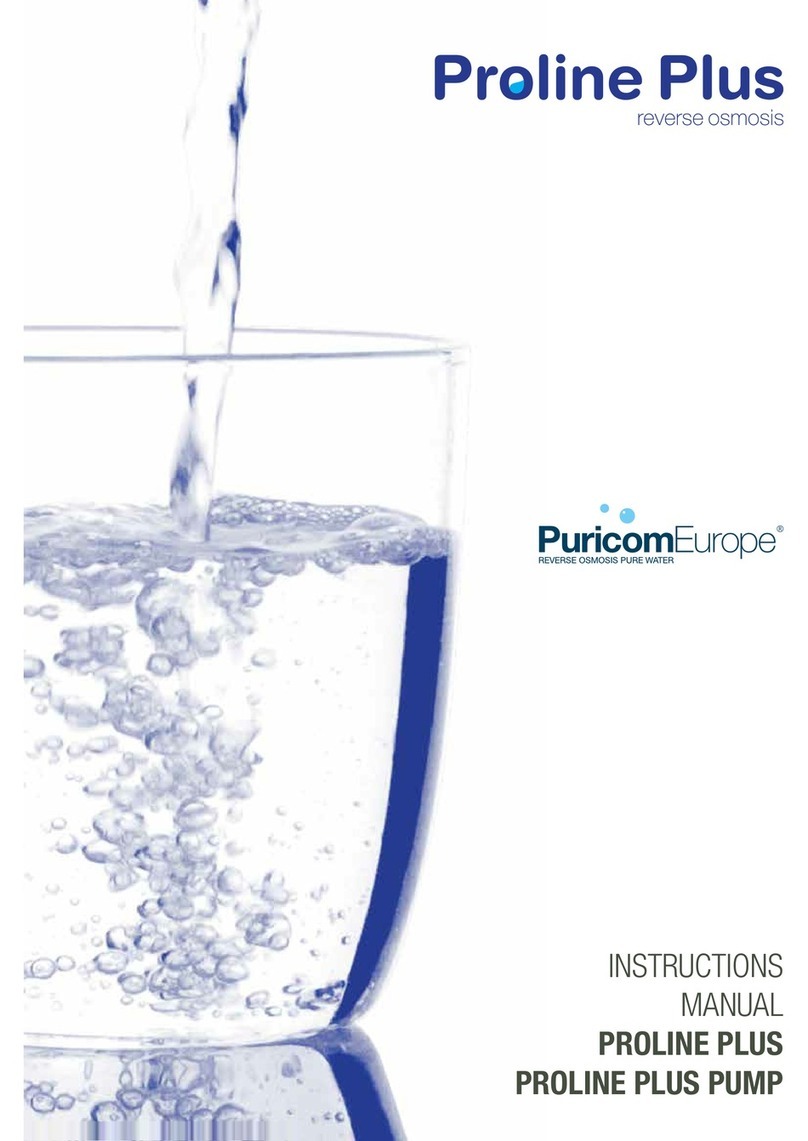
Working conditions
220mm x 205mm x 380mm
1.5Kg
AC (100-240) V ~ 50 / 60Hz: 0.6 ~ 0.8A DC 12V / 2A
15 ºHF
Dimensions (A x B x C):
Weight (empty):
Electrical power supply:
Working temperature (min - max): 3ºC ~ 40ºC
Hardness (max):
TDS (min - max): 10ppm ~ 300ppm
Characteristics of the treated water
- 200mV ~ -600mV *
700ppb ~ 1200ppb *
2 liters
10/20/30 minutes Body,
Jug,
Electrical adapter, Ozone filter
ORP (min - max):
Dissolved hydrogen concentration: Jug
capacity:
Working time:
Accessories:
*Depending on the water to be treated.
DISTRIBUTED BY:
WATER LOGISTICS GROUP
Aiguafreda, 8
Pol. Ind. L'Ametlla Park
08480, L'Ametlla del Vallès
Barcelona - Spain
T +34 93 693 43 00 / +34 902 305 310 F +34 93
693 43 29
4. UNPACKING AND VERIFICATION OF CONTENTS
It is important that before installation and start-up you check the box
and the condition of the equipment, in order to ensure that it has not
been damaged during transport.
Claims for damage during transport must be submitted together with
the delivery note or purchase invoice to your distributor, attaching the
name of the carrier, within a maximum period of 24 hours after
receiving the equipment.
Extract the equipment and its accessories from their packaging, removing
the corresponding protections.
The materials used in the packaging are recyclable and must be
disposed of in the appropriate separate collection containers or in the
specific local center for the recovery of waste material.
This product cannot be disposed of together with normal urban waste.
When you wish to dispose of the equipment, it must be delivered to
the company or center where it was purchased or to the specific local
center for the recovery of materials, indicating that it has electrical
and electronic components.
The correct collection and treatment of unusable appliances
contributes to preserving natural resources and also to avoiding
potential risks to public health.
Caution: remove or keep out of reach of children plastic
bags and small items, which could be a danger to them.
Potability requirements demanded by the European directive 98/83 and
/ or RD 140/2003.
Attention: the water treatment equipment requires periodic
maintenance, in order to guarantee the quality of the water
produced and supplied.
5.1. APPLICATION WARNINGS, LOCATION
In case of doubt about its consumption and your health in particular,
consult a specialist.
• Its application is recommended as a post-treatment of a domestic
water purification system through reverse osmosis.
• The equipment must be fed with water between 10 and 300 ppm of
TDS, dechlorinated and decalcified.
If the equipment is fed with hard or non-softened water, it
may lead to a substantial reduction in the useful life of certain
equipment components, which may cause premature
malfunction.
• Do not use other liquids with the equipment other than water.
5. PRIOR WARNINGS
Attention: read this manual carefully before installing and
using your equipment.
Attention: these equipments ARE NOT POTABLE WATER.
They should not be fed with water of unknown origin and / or
that does not comply with






























